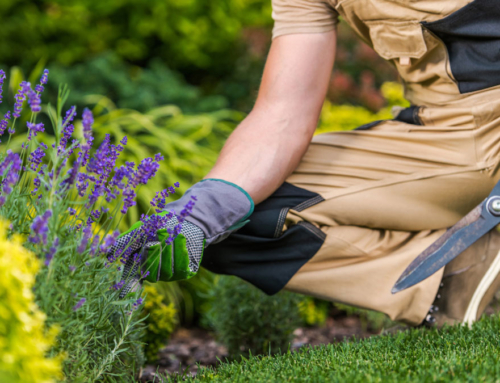COMPOSTING

Do you compost? Would you like to start?
Composting is nature’s process of recycling decomposed organic materials into a rich soil. Home composting is an acceleration of this same process. By composting your organic waste you’re returning rich nutrients to the soil, promoting soil microbes that aid plant growth. Essentially, finished compost is a free soil amendment for your garden. It encourages the production of beneficial bacteria and fungi that break down organic matter to create humus, a rich nutrient-filled material. By adding compost you’ll improve the overall texture of your soil, enabling it to retain and drain water better.
Benefits of Composting
Composting both enhances your garden’s ability to grow healthy plants and reduces your volume of trash. As highlighted by the United States Environmental Protection Agency (EPA), food scraps and yard waste make up 20 to 30 percent of what we throw away. Making compost keeps these materials out of landfills where they take up space and release the greenhouse gas methane.
Compost vs. Fertilizer
The difference between natural compost and fertilizer is that compost feeds the soil, while fertilizers feed your plants. While fertilizer does add to the soil’s nutrient supply, it doesn’t feed the soil’s “food web” (microscopic bacteria and fungi, earthworms, crickets, and other life forms that have a symbiotic relationship with plant roots).
However, compost and fertilizer do work together. The organic matter in compost sponges up the fertilizer nutrients until plants need them. Soil that is regularly amended with compost becomes dark and crumbly and often requires much less fertilizer compared to soil that has not yet benefited from regular compost additions.
How to Compost
- Select a cool, dry spot near a water source for your compost bin. Or, start your pile on bare earth and add a layer of straw (a few inches deep, for drainage).
- Add your brown and green materials as they are collected, and make sure to chop or shred larger pieces.
- Moisten dry materials as they are added and, once your compost pile is established, mix grass clippings and green waste into the pile and bury fruit and vegetable waste under 10 inches of compost material. You can choose to cover your compost pile to keep it moist.
- As the organic materials in your compost pile begin to decompose, the temperature of the pile will rise, especially in the center. An adequately maintained backyard compost pile can reach temperatures ranging from 130°F to 160°F. These high temperatures can help to reduce the presence of pathogens and weed seeds.
- Mixing and turning the pile regularly is essential to accelerate the decomposition process and improve aeration. You can use a garden fork to move the outer layer of the pile inward.
- It is important to regularly monitor your compost pile for moisture, odor, and temperature.
- In areas with low rainfall, such as Colorado, it is crucial to keep adding moisture to the compost regularly to maintain the composting process. If certain parts of the composting material become dry, it can cause a number of microorganisms in those areas to die. Even when the moisture is added later, the remaining microbes require time to multiply and restart the process of breaking down the organic matter. You can add water to the pile and turn it to maintain moisture.
- If you notice a bad odor, it may be too wet, or it needs more air circulation. In this case, you can add more brown or dry material to the pile and turn it. If the pile is not heating up, you can mix in more green material and turn the pile. By making these adjustments as needed, you can ensure that your compost pile stays healthy and active.
- When composting, let the pile cure for at least four weeks after it stops heating up and there are no visible food scraps. Well-maintained compost will be ready in three to five months. The finished compost will be dark, loose, and crumbly and should have decomposed most materials. Use a homemade screener to remove any undecomposed materials.
What to Compost
- Fruits and vegetables
- Eggshells
- Coffee grounds and filters
- Tea bags
- Nut shells
- Shredded newspaper
- Cardboard
- Paper
- Yard trimmings
- Grass clippings
- Houseplants
- Hay and straw
- Leaves
- Sawdust
- Wood chips
- Cotton and wool rags
- Dryer and vacuum cleaner lint
- Hair and fur
- Fireplace ashes
What Not to Compost
- Black walnut tree leaves or twigs
– Releases substances that might be harmful to plants - Coal or charcoal ash
– Might contain substances harmful to plants - Dairy products (e.g., butter, milk, sour cream, yogurt) and eggs*
– Create odor problems and attract pests such as rodents and flies - Diseased or insect-ridden plants
– Diseases or insects might survive and be transferred back to other plants - Fats, grease, lard or oils*
– Create odor problems and attract pests such as rodents and flies - Meat or fish bones and scraps*
– Create odor problems and attract pests such as rodents and flies - Pet wastes (e.g., dog or cat feces, soiled cat litter)*
– Might contain parasites, bacteria, germs, pathogens and viruses harmful to humans - Yard trimmings treated with chemical pesticides
– Might kill beneficial composting organisms
* Check with your local composting or recycling coordinator to see if these organics are accepted by your community curbside or drop-off composting program (from the U.S. EPA).
Composting is an easy and effective way to reduce waste while promoting healthy soil for your garden. By composting, you can keep food scraps and yard waste out of the landfill and create a nutrient-rich amendment for your garden. If you have any questions or need further assistance on composting, don’t hesitate to contact your local composting or recycling coordinator, and if you need any other advice or help maintaining your yard, give us a call!







